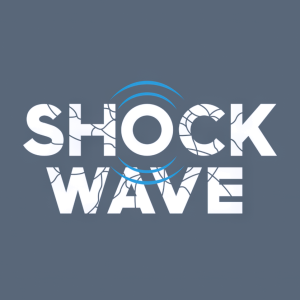New Shockwave Coronary IVL Publication Shows Similar Outcomes in Women And Men
- The one-year outcomes published in JSCAI confirm the excellent and consistent safety and effectiveness of coronary intravascular lithotripsy (IVL) in both women and men. The results from Disrupt CAD III and IV trials demonstrate that IVL for lesion preparation of severely calcified lesions had similar safety and effectiveness in women and men at a one-year follow-up.
- None.
Insights
Analyzing...
One-Year Outcomes Published in JSCAI Confirm Excellent, Consistent IVL Safety and Effectiveness Across Sexes
SANTA CLARA, Calif., Nov. 09, 2023 (GLOBE NEWSWIRE) -- Shockwave Medical, Inc. (NASDAQ: SWAV), a pioneer in the development and commercialization of transformational technologies for the treatment of cardiovascular disease, announced today new data demonstrating excellent one-year outcomes with coronary intravascular lithotripsy (IVL) that was consistent in both women and men. The one-year results from Disrupt CAD III and IV trials were recently published in the Journal of the Society for Cardiovascular Angiography & Interventions (JSCAI).
In the patient-level pooled analysis, titled “Coronary Intravascular Lithotripsy for Treatment of Severely Calcified Lesions: Long-Term Sex-Specific Outcomes,” use of IVL for lesion preparation of severely calcified lesions had similar safety and effectiveness in women and men at a one-year follow-up. This is in contrast to atheroablative approaches to vessel preparation, where previous reports show that women are more susceptible to adverse procedural outcomes compared with men.i
The publication reported that despite smaller average reference vessel diameters (2.8 mm vs 3.1 mm) in women (n=106) compared with men (n=342), post-IVL serious angiographic complications, defined as a composite of severe dissection, perforation, abrupt closure, slow-flow, or no-reflow, were similar between women and men (
“The high acute procedural success rate associated with IVL, the infrequent complications and similar one-year clinical outcomes is overall favorable, suggesting that the use of IVL in women is very beneficial in this retrospective analysis,” said Alexandra Lansky, MD, Professor of Medicine (Cardiology), Director of Yale Cardiovascular Clinical Research Program, Yale University School of Medicine, New Haven, CT, USE. “Given these findings, I am even more excited to see the results from the prospective, 400-patient EMPOWER CAD study that has recently started to see how we can better inform interventional cardiologists on the optimal strategy to treat women suffering from coronary artery disease in a ‘real-world‘ setting.”
EMPOWER CAD is the first prospective, women-only study of coronary interventions and aims to confirm the benefits of coronary IVL in this under-represented patient population. The first patient was enrolled in May 2023 by Richard A. Shlofmitz, MD, Chairman, Department of Cardiology, St. Francis Hospital in Roslyn, NY, USA. The co-principal investigators for EMPOWER CAD are Margaret McEntegart, MD, PhD, Director of Complex Percutaneous Coronary Intervention Program at Columbia University Medical Center/New York-Presbyterian Hospital and Alexandra Lansky, MD. The European lead is Nieves Gonzalo, MD, PhD, Consultant Interventional Cardiologist at Hospital Clinico San Carlos in Madrid, Spain.
About Shockwave Medical, Inc.
Shockwave Medical is a leader in the development and commercialization of innovative products that are transforming the treatment of cardiovascular disease. Its first-of-its-kind Intravascular Lithotripsy (IVL) technology has transformed the treatment of atherosclerotic cardiovascular disease by safely using sonic pressure waves to disrupt challenging calcified plaque, resulting in significantly improved patient outcomes. Shockwave has also recently acquired the Neovasc Reducer, which is under clinical investigation in the United States and is CE Marked in the Europe. By redistributing blood flow within the heart, the Reducer is designed to provide relief to the millions of patients worldwide suffering from refractory angina. Learn more at www.shockwavemedical.com and www.neovasc.com.
Forward-Looking Statements
This press release contains statements relating to our expectations, projections, beliefs, and prospects, which are “forward-looking statements” within the meaning of the Private Securities Litigation Reform Act of 1995. In some cases, you can identify these statements by forward-looking words such as “may,” “might,” “will,” “should,” “expects,” “plans,” “anticipates,” “believes,” “estimates,” “predicts,” “potential” or “continue,” and similar expressions, and the negative of these terms. Forward-looking statements in this press release include, but are not limited to, statements regarding potential future results of pending clinical trials. You are cautioned not to place undue reliance on these forward-looking statements. Forward-looking statements are only predictions based on our current expectations, estimates, and assumptions, valid only as of the date they are made, and subject to risks and uncertainties, some of which we are not currently aware.
Important factors that could cause our actual results and financial condition to differ materially from those indicated in the forward-looking statements are discussed in our filings with the Securities and Exchange Commission (SEC), including in the sections titled “Risk Factors” in our most recent Annual Report on Form 10-K and subsequently filed Quarterly Reports on Form 10-Q, and in our other reports filed with the SEC. Except to the extent required by law, we do not undertake to update any of these forward-looking statements after the date hereof to conform these statements to actual results or revised expectations.
Media Contact:
Scott Shadiow
+1.317.432.9210
sshadiow@shockwavemedical.com
Investor Contact:
Debbie Kaster
dkaster@shockwavemedical.com
*Dr. Lansky is a paid consultant of Shockwave Medical. She has not been compensated in connection with this press release.








